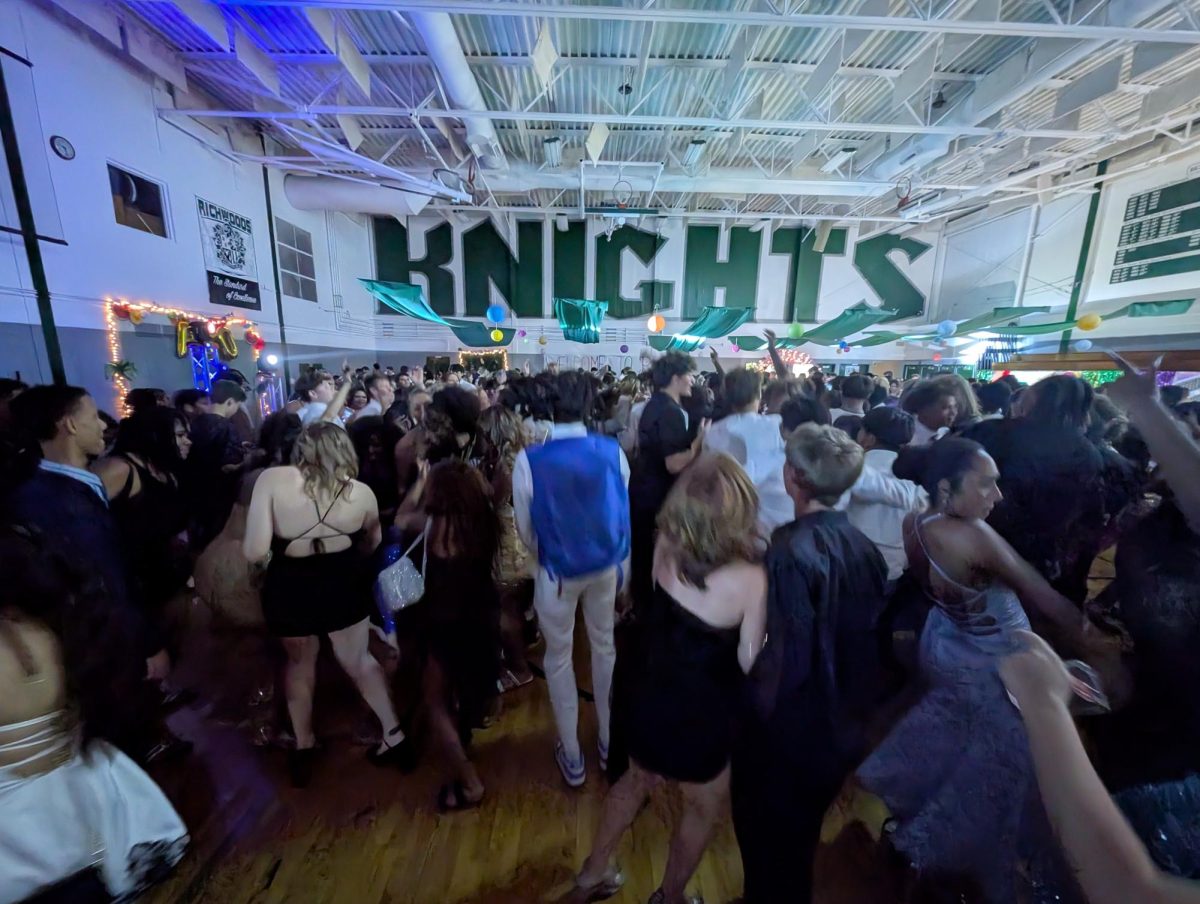This small independent game from breakout developer Chilla’s Art took the internet by storm, captivating and terrifying hordes of unassuming players.
The horror genre of video games is broad, containing countless distinct types of bone-chilling experiences. Whether it be the resource management and tense encounters of the Resident Evil franchise or the panicked sprinting and hiding of games like Outlast and Alien Isolation, there is bound to be something that caters to everyone’s play style. But what happens when a game is released outside of those preexisting boxes? This is exactly what happened on March 18, 2022: The Closing Shift released on Steam, courtesy of the developers at Chilla’s Art Studios out of Japan. A seemingly surface-level game about working at a coffee shop seamlessly transforms into a nightmare before your eyes. The Closing Shift began gaining traction immediately upon release, and soon enough, millions of people were either playing the game or watching a content creator play through it. How did this less than 2-hour experience manage to effectively achieve what so many other indie titles failed to do?
The Closing Shift places the player in the role of a young woman who works night hours at a café. The shift is always taken alone – whoever is currently working will always leave when the player enters. The game progresses through a sequence of nights, with each night being a separate shift. The café, aptly named Chilla’s Coffee, could very well be the least daunting setting imaginable for a horror game. The mellow lighting and soft jazz crank the ambience up to maximum, creating a space that feels pleasant and safe. Customers will begin giving their orders for drinks and food, making idle conversation all the while. The player must learn how to make and present the consumables the café has to offer – hot drinks, cold drinks, and pastries need to be expertly crafted and given to the customers. The information on how to run the café is stored within a selection of video tapes and a white board in the back room, all demonstrating step-by-step instructions on how to craft the café’s menu. Through careful attention paid to both the tapes and the white board, the player becomes skilled at the tasks required to effectively serve customers: readily recognizing the names of drinks, recalling where the separate syrups and sauces are, and knowing the recipes by heart. A steady routine is developed as more customers walk away satisfied.
The sense of routine and confidence that the player gains is gradually picked apart as unsettling things begin happening around Chilla’s Coffee, which is precisely what gives this game such a successful execution – the player becomes so laser focused on getting the orders right that they begin to question whether they’re seeing things or not. Questions arise out of paranoia, such as “did something just move in the corner of my eye?” or “was this person here before?” The minute the player starts to get comfortable with their skills, they are immediately taken out of that comfort zone and thrown into a once again unfamiliar situation.
There is a tangible change in the atmosphere of The Closing Shift when a woman named Saran walks into the café and makes small talk while she prepares to order. Before Saran decides on her mocha, she mentions that stalker cases in the area are on the rise and warns the player to be careful – a notion that makes sense, considering the main character is a young woman working alone at night. This remark may seem trivial at first, but it proves to be extremely important. The conversations that the customers initiate continue to uphold this underlying feeling of dread. A group of boys walks in shortly after the woman leaves, and one of them asks his friends if they heard a noise. After the boys leave, a detective enters the coffee shop and reports that there have been numerous recent instances of people being harassed. The detective asks whether there’s been any suspicious activity in the shop and says to keep an eye out.
As these short but meaningful encounters continue to build, strange occurrences become frequent as well. Cartons of milk can be found spilled all over the back room with no indication of how they got there. The customers who enter the store turn more unsettling, including a man who says absolutely nothing. This manages to be very off-putting after the previous ones have been so talkative. As the second night ends and the tasks shift from serving coffee to cleaning up, a car can be heard outside circling the store. It can also be seen through the windows. To make this already creepy situation exponentially worse, on one of the tables is a picture of the main character taken through the window while she was working. The slow buildup of these circumstances leads to a chilling realization- this woman is being stalked.
Every interaction past this point, no matter who it’s with, becomes unnerving. There’s a sense of vulnerability that washes over the player after learning that someone has been watching their every move this entire time. The learned precision at making the drinks takes a back seat to panic. Every person who passes by is now a suspect, and the once cozy interior of the coffee shop begins to feel claustrophobic. If there was still room for doubt that someone is stalking the player, the game confirms those suspicions. A man can be seen on a camera that records outside the drive-thru window, standing completely still, and later, notes containing love confessions can be found both at the café and at the woman’s home.
The Closing Shift comes to a head with a final night shift after more and more evidence of the stalker is uncovered. A storage room that has been locked for the duration of the game is opened, and the spilt milk found in the café earlier is finally explained with what could be the most memorable shot in the game: a high-pitched ringing resonates as the camera pans down to a bed surrounded by food, pictures, and empty milk cartons. The stalker has been living in the store the whole time. The final sequence flies by in a rush, as the player feverishly works to close the store. Menial tasks suddenly feel like they take years with the knowledge that you’re in danger. As the sign on the door is flipped to close the store, a man sprints directly in front and presses his hands against the glass. His body language indicates that he has malicious intentions. The race against the clock continues as the player is forced to choose the safest course of action. The ‘good’ ending is achieved by heading to the roof and dropping a cinder block on the stalker’s head as he lies in wait by the back exit. This logically eliminates the threat and clears the path to as happy of an ending as you can have when the plot is this dark. Right before the end, though, The Closing Shift ensures that you won’t close the game feeling any lighter than you did before playing it. The game leaves off with a shot of the woman talking on the phone on the balcony of her apartment as the closet behind her slowly opens. The credits roll and the screen goes black.
No matter how many forms of horror are portrayed in media, the most effective will always be the realistic depictions of unsafe situations. Zombies and ghosts get the job done well enough, but nothing can truly make one’s skin crawl like an entirely plausible scenario that can happen, has happened, and will happen again. First and foremost, The Closing Shift utilizes the risks of simply being a woman – much less a woman who works alone late at night. Many of the players who are lucky enough to be oblivious end up with the gut-wrenching realization that these kinds of experiences aren’t just hyperbolized for the sake of making a scary game. This stuff happens more frequently than most are willing to admit. Out of all the jump scares, unsettling noises and unnecessarily long coffee orders, that is the most terrifying part of this experience. The horror of The Closing Shift serves to remind that the real monsters are people.








































